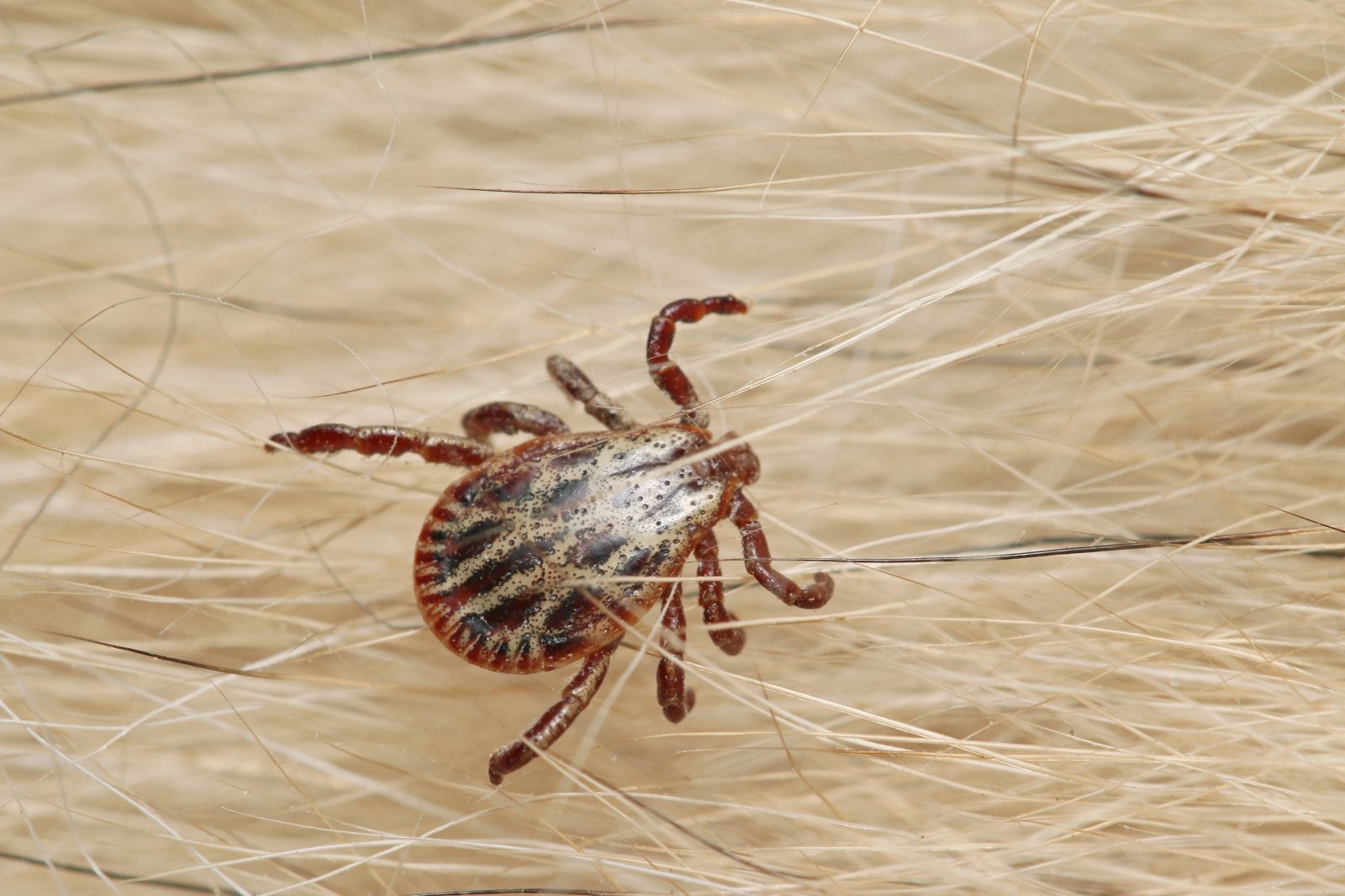
[ad_1]
Outdoor training on the green grass of the park in good weather – a boon for those who crave sports. However, such a picture also delights the ticks that woke up after winter. They are currently only looking for prey, and scientists are also warning of a new species of ticks spreading in Lithuania.
“Short grass, sports mat. I don’t think there are ticks here. Or we meet on stage, where there is only cement, ”said Impuls sports coach Gediminas Mikelevičius.
Mites like those already found in Lithuania are common in countries where the climate is warmer.
“We found a new species in Lithuania, whose peak is found in mid-summer, July, August. The tick was found in the Raseiniai district while investigating others. We also found them in animals and deer,” said Algimantas Paulauskas, professor of the Department of Biology from Vilnius University.
The first such mite was detected in Lithuania in July 2019. Scientists themselves cannot answer how much the newly discovered tick species has managed to spread in Lithuania, but there is anxiety.
“With migration, with increased transit, diseases that have only been found in North Africa can spread. Our challenge now is to continue investigating the extent of the spread here due to the dangers and risks. We are explaining which routes, perhaps animals and birds could have taken them ”, said A. Paulauskas.
So far, the biggest risk, according to the professor, is the possibility of contracting tick-borne encephalitis throughout the year.
“It is possible that this new species was recently discovered in Lithuania. However, it is common in southern countries: Spain, France, Germany,” said Aušra Bartulienė, an epidemiologist at the Center for Communicable Diseases and AIDS.
However, some specialists are reassuring: the new species is no more aggressive or dangerous than those that are already widespread in Lithuania. And watch out for nature, especially now and now.
“This described species is not a competent vector. We really need to take care of one that is ubiquitous. And it really worries us more than anything else,” said Milda Žygutienė, chief specialist of the Vilnius Department of the National Center for Public Health (NVSC).
Residents themselves say they look back every time they return from hikes. The coach, who plays outside, says he has so far avoided getting soaked. But the dog was already suffering.
“It’s hard to say, but there were at least 20 walks on the field at one time,” coach G. Mikelevičius told LNK.
Animal trainer Grėtė has already detected almost a few ticks and several dozen ticks on her pet.
“We like to go deep into the forest, we really collected a lot there, maybe 16 of them. I picked from each dog for another 2 days. He was still in bed, crawling on my head, I only saw him the next day,” said Grėtė Krutovienė , the founder of Wonderdog Academy.
The woman says that there are so many ticks and such an image that they no longer respond to protection measures. Consider whether they mutate and adapt.
“He had companions who had triple protection and yet the puppy caught a tick and caught babesiosis,” the interlocutor told LNK.
Not only on the outskirts of the city, but also in the center, near the White Bridge ticks. Here people fix the rugs, sit down, eat.
“It just came to our knowledge then. And that abundance is increasing every year due to the very favorable climatic conditions for them. There are also many animals that they can feed on,” said A. Bartulienė.
Vaccines against tick-borne encephalitis are necessary in winter, when the ticks are not yet active. However, even late vaccination is possible throughout the year. 2 doses of the vaccine protect for up to one year, the third dose for approximately three years. The maintenance dose should be repeated every 3 to 5 years.
“About 1 percent of ticks infected with the tick-borne encephalitis virus are present. And when it comes to Lyme disease, it is said that on average about 20 percent of ticks, ”said M. Žygutienė.
Experts advise wearing bright clothes during a long stay in nature. This will make the mite easier to see.
[ad_2]